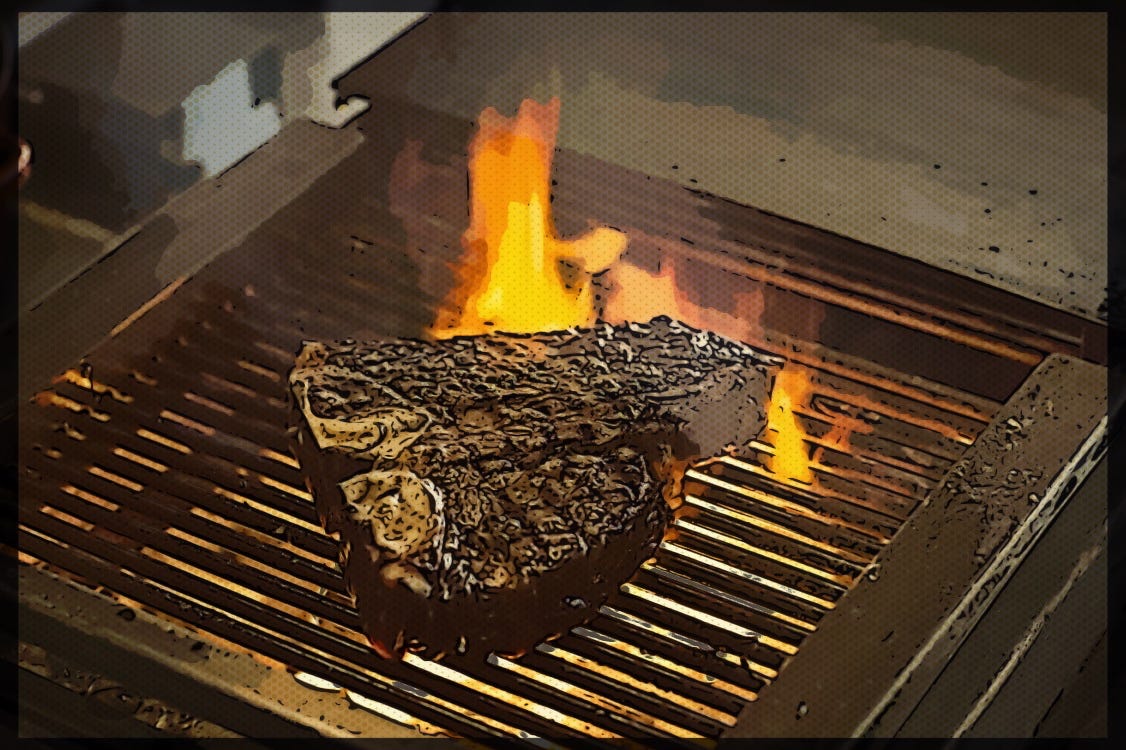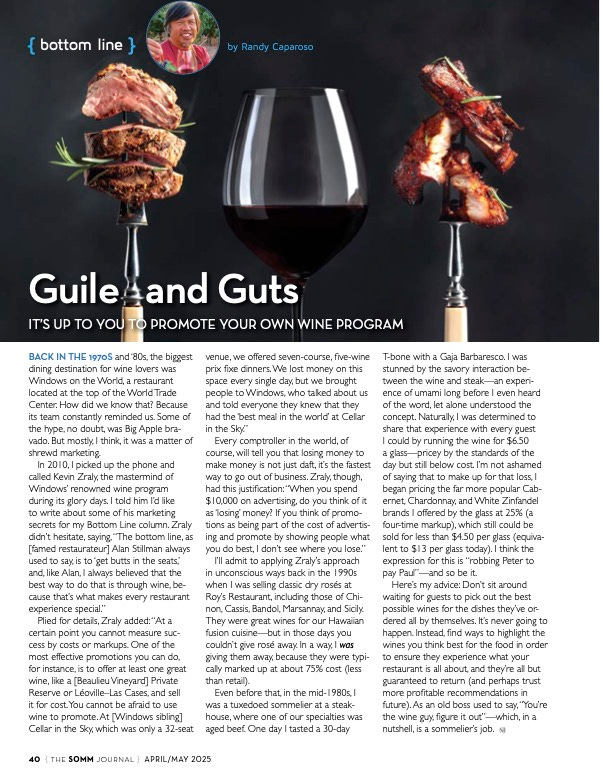Guile and guts
A wine program doesn't promote itself
In its heyday, back in the 1970s and '80s, the country's biggest wine destination was Windows on the World, a restaurant located at the top of the ill-fated World Trade Center. How did we know that? Because Windows on the World constantly reminded us. A lot of it, no doubt, was Big Apple bravado. But mostly, I think, it was shrewd marketing.
In 2010 I picked up the phone and called Kevin Zraly, the mastermind behind Windows' reputation for wine program excellence during its glory days. I told him I'd like to write a column on some of his marketing secrets for my Bottom Line column. Zraly didn't hesitate, saying, "The bottom line, as Alan Stillman always used to say, is to ‘get butts in the seats,’ and like Alan, I always believed that the best way to do that is through wine, because that’s what makes every restaurant experience special."
Plied for details, Zraly added: "At a certain point you cannot measure success by costs or markups. One of the most effective promotions you can do, for instance, is to offer at least one great wine, like a B.V. Private Reserve or Leoville-Las-Cases, and sell it for cost. You cannot be afraid to use wine to promote. At Cellar In the Sky, which was only a 32-seat venue, we offered 7 course/5 wine prix fixe dinners. We lost money on this space every single day, but we brought people to Windows, who talked about us, and told everyone they knew that they had the ‘best meal in the world’ at Cellar In the Sky."
Every comptroller in the world, of course, would tell you that losing money to make money is not just daft, it's the fastest way to go out of business. My old boss always called it "spinning your wheels." Zraly, though, backed up his methodology by this justification: "When you spend $10,000 on advertising, do you think of it as ‘losing’ money? If you think of promotions as being part of the cost of advertising, and promote by showing people what you do best, I don’t see where you lose.”
I'll admit applying Zraly's approach in unconscious ways back in the 1990s when I was selling classic dry rosés—great wines for our fusion cuisine. My favorites were those of Chinon, Cassis, Bandol, Marsannay and Sicily, but in those days you couldn't give these wines away. In a way, I was giving them away because they were typically marked up at about 75% cost (less than retail).
In the mid-1980s I was a tuxedo-wearing sommelier at a tableside service steakhouse, where one of our specialities was aged beef. One day I tasted a 30-day T-bone with a Gaja Barbaresco. I was stunned by the savory interaction between the wine and steak—an experience of umami long before I even heard of the word, let alone understood the concept.
Naturally, I was determined to share that same experience with every guest I could, but in order to do that I had to run the Gaja Barbaresco for $6.50/glass (considered highway robbery back in the '80s), which still meant I was selling it for below cost. I'm not ashamed of saying, though, that to make up for that loss I began pricing the far more popular Cabernet, Chardonnay and White Zinfandel brands I was running by the glass at 25% (four times markup), which still could be sold for less than $4.50/glass (equivalent to $13/glass today). I think the expression for this is robbing Peter to pay Paul—and so be it.
Here's the scoop: Guests don't ask for specific experiences in restaurants. Most of them don't even like talking to sommeliers. The wines you choose to offer, however, are like the dishes your chefs create—you have to put all you can in front of them in order to get them to experience what your restaurant is all about.
Whatever you do, don't sit around waiting for guests to pick out the best possible wines for specific dishes all by themselves. It's never going to happen. As another one of my old bosses used to say, "You're the wine guy, figure it out"—which, in a nutshell, is a sommelier's job.





Well said, Randy! And I would add the subtext to your piece--if you want to sell wine in a restaurant and make friends, for god's sakes don't overprice the juice. Don't make wine the sacrificial lamb by putting the onus of profit solely on it, which too many restaurants do (including some I have worked at too). We would all be better off if wine was price at no more than 200% of cost. Food needs to pay its way, too
'jb
Love this! The way we do it in Oregon, Washington and Folsom is we deliver direct from the winery to our Tasting Room Restaurants charging the tasting room bottle price with a 20% discount for Club Members and a 25% discount for Owners. This creates a culinary sampling experience that brings down the price of small lot, single vineyard bottlings.